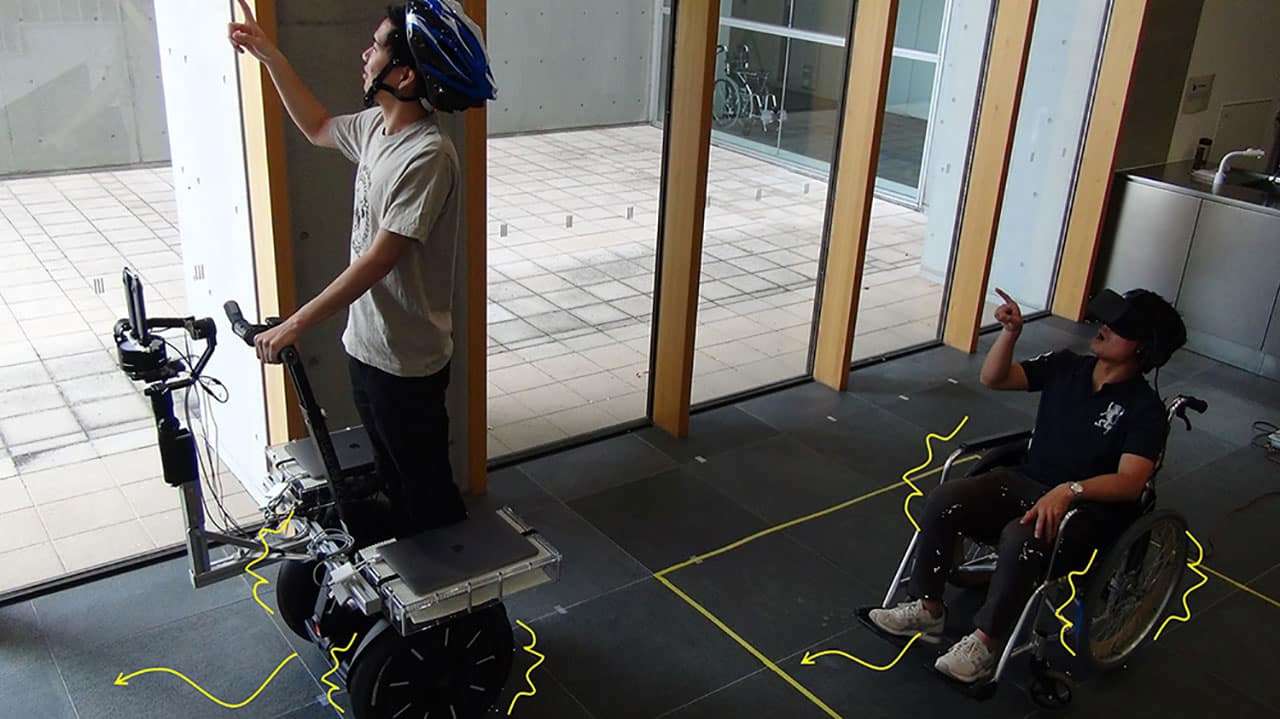
Various tasks, such as security patrolling or supervision of construction sites, require the worker to drive a vehicle to reduce their workload. To increase the accuracy of the investigation of a scene, remote collaboration with an expert could be useful.
In the field of remote work, Virtual Reality (VR) technology offers a chance for workers in different locations to share what they see and hear in real-time. However, one major drawback can ruin the whole experience – VR sickness, which comes from users seeing “motion” through their headsets without actually moving.
To get around this issue, a research team at Tokyo Metropolitan University, Japan, has developed a vehicle-ride sensation-sharing system that enables a local rider to collaborate with a remote driver immersive. The virtual reality remote collaboration system lets users on Segways share not only what they see but also the feeling of acceleration as they move.
The vehicle-ride sensation-sharing system was developed by attaching the Segway with two 360-degree cameras and a stabilizer to measure not only visual cues but detailed information on the acceleration of the vehicle and send them to each eye of a head-mounted display worn by a local rider.
Researchers have developed the prototype of the Vibro-vestibular display for local riders by modifying a conventional wheelchair with a simple, lightweight mechanism for actuation and vibration by two DC motors. The team then investigated the effectiveness of a Vibro-vestibular wheelchair. As the user on the Segway accelerated, so did the wheelchair, allowing remote users to not only see the same scenery but feel the same acceleration.
The team put their device to the test by asking volunteers to become remote users and rate their experience. The results showed that the acceleration/deceleration of the wheelchair proportional to that of the visual cue could significantly reduce virtual reality sickness by approximately 54% and increase the sense of riding a vehicle by approximately 2.25 times. The researchers also noticed subtleties in how the information should be fed back.
The technology still needs improvements. But the team’s system promises exciting new possibilities for remote collaboration, freeing remote users from a major drawback of VR technology.
Journal reference:
- Vibol Yem, Reon Nashiki, Tsubasa Morita, and Yasushi Ikei. Vehicle-ride sensation sharing system with stereoscopic 3D visual perception and vibro-vestibular feedback for immersive remote collaboration. Advanced Robotics, 2022; DOI: 10.1080/01691864.2022.2129033
New VR system lets riders share sites in real-time, reduces VR sickness
Source: Tambay News

0 Comments